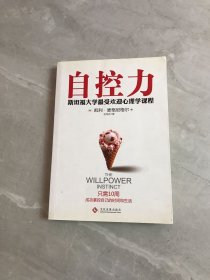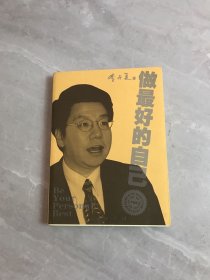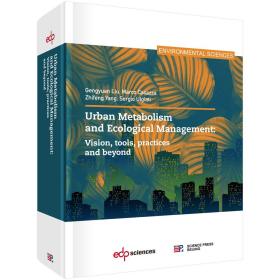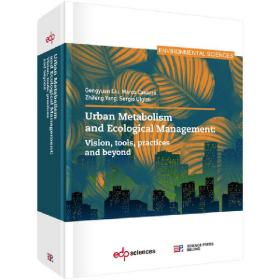
城市代谢与生态管理(英文版)签名本
现货
¥ 140 2.0折 ¥ 700 九五品
仅1件
北京昌平
认证卖家担保交易快速发货售后保障
作者刘耕源 著
出版社科学出版社
出版时间2020-11
版次1
装帧其他
货号22上
上书时间2024-04-15
- 在售商品 暂无
- 平均发货时间 10小时
- 好评率 暂无
- 最新上架
商品详情
- 品相描述:九五品
图书标准信息
- 作者 刘耕源 著
- 出版社 科学出版社
- 出版时间 2020-11
- 版次 1
- ISBN 9787030661661
- 定价 700.00元
- 装帧 其他
- 开本 16开
- 纸张 胶版纸
- 页数 813页
- 【内容简介】
- 快速城市化过程中面临的资源压力、环境破坏和生态退化使得城市发展面临严峻挑战。因此,如何提高资源利用效率和减少环境排放是探索城市环境生态系统可持续发展的关键问题。传统方法缺乏考量资源的品质差异,难以系统量化不同资源对城市系统的贡献及其潜在环境影响。《Urban Metabolism and Ecological Management: vision, tools, practices and beyond》提出“城市代谢”理论和方法学,并运用到多尺度案例中,提出可行的途径解决城市产业生态关联核算、结构优化和政策效果模拟等问题,取得了若干具有理论创新和应用价值的研究成果,包括:1)提出并较深入地研究了新的城市代谢理论与城市代谢“流量-结构-效率-环境影响”四位一体分析方法。2)揭示了城市生态资源间的网络关联结构并开展行业政策的系统动力学演化模拟研究。研究生态流在系统中的单向/双向反馈过程以及促进/抑制机制,对不同行业发展政策产生的效果进行精细和定制化的中长期模拟。3)开发了城市能-水-食物等资源要素配置方法并应用于部门规划管理和政策优化研究。实现多种生态资源配置的全局优化,为复杂城市系统生态管理规划与资源优化配置提供了重要支撑。《Urban Metabolism and Ecological Management: vision, tools, practices and beyond》汇集了研究者近十多年的研究成果,城市内部结构不完善、布局不合理,内部分工协作不够、污染物协同处置效率不高等问题的出现需要从科学的角度提出推进城市健康发展的技术路径和科学方案,从解决城市与区域之间关系、促进城市整体协调发展等方面出发,为城市与区域的可持续发展提供管理依据。
- 【目录】
-
Contents
Chapter 0 Urban metabolism for the urban century1
0.1 Motivation3
0.2 The research questions5
0.3 Aim of the book 8
Part A: Vision and Theory
Chapter 1 City: A socio-ecological view of human communities 11
1.1 Introduction13
1.2 Urban sustainable development debate14
1.3 Urban metabolism and principle of entropy increase15
Chapter 2 Traditional Ecological Knowledge (TEK) of urban sustainability 19
2.1 Introduction21
2.2 Method22
2.3 Urban TEK and environmental sustainability25
2.4 Urban TEK and economic sustainability 29
2.5 Urban TEK and social sustainability 30
2.6 Discussion33
2.7 Conclusion 38
Chapter 3 Urban metabolism theory and analysis methods 41
3.1 Introduction43
3.2 Origin and development of metabolic theory43
3.3 Metabolic studies at different scales 49
3.4 Main methods of metabolism research 53
3.5 Implication of metabolism study on different scale60
Chapter 4 Environmental accounting and urban metabolism65
4.1 Introduction67
4.2 Present knowledge for urban environmental accounting and management 69
4.3 Present challenges for urban environmental accounting and management73
4.4 Discussion74
Chapter 5 Ecosystem services accounting framework and urban metabolism 77
5.1 Introduction79
5.2 Literature review81
5.3 The framework for non-monetary ESV accounting84
5.4 Discussion93
5.5 Conclusion 99
Chapter 6 A physical view of urban metabolism dynamics 101
6.1 Introduction103
6.2 Allometric laws and cities103
6.3 Global energy constrains111
6.4 Conclusions125
Chapter 7 Urban metabolism and urban ecological culture 127
7.1 Introduction129
7.2 Analogy between cell and ecological culture129
7.3 Cellular structure and function130
7.4 Concept model of reconstruction of UEC131
7.5 Conclusion 136
Chapter 8 Circular economy and urban ecological management 137
8.1 Introduction139
8.2 The evolution of circular economy practices in China and Europe147
8.3 Concluding remarks159
Part B: Tools and Approaches
Chapter 9 Urban metabolic process analysis165
9.1 Introduction167
9.2 Methodology168
9.3 Ecological economic account of Beijing urban ecosystem173
9.4 Discussion187
9.5 Conclusion 191
Chapter 10 Urban metabolic flux and structure analysis193
10.1 Introduction195
10.2 Methodology and data use 197
10.3 Results199
10.4 Conclusion and discussion212
Chapter 11 Urban metabolic network structure analysis215
11.1 Introduction217
11.2 Methodology218
11.3 Extended exergy analysis226
11.4 Ecological network analysis results 233
11.5 Discussion237
11.6 Conclusion 239
Chapter 12 Environmental impact analysis in urban metabolic system241
12.1 Introduction243
12.2 Characteristics of the environment and economy in Beijing 245
12.3 Methodology245
12.4 Results and discussion 254
12.5 Conclusion 263
Chapter 13 Urban metabolic dynamic analysis265
13.1 Introduction267
13.2 State of the art 268
13.3 Material and methods269
13.4 Model calibration and parameter selection 276
13.5 Results280
13.6 Discussion and conclusion285
Chapter 14 Urban metabolism health evaluation and spatial development pattern analysis289
14.1 Introduction291
14.2 Materials and methods 292
14.3 Results298
14.4 Discussion302
14.5 Conclusion 304
Chapter 15 Urban agglomeration metabolism sustainability analysis307
15.1 Introduction309
15.2 Methods 313
15.3 Results324
15.4 Discussion333
15.5 Conclusion 336
Chapter 16 Thermodynamic geography of urban metabolic process 339
16.1 Introduction341
16.2 Material and methods345
16.3 Results and discussion 356
16.4 Conclusion 366
Chapter 17 Urban food-energy-water nexus analysis to support urban circular economy strategy369
17.1 Introduction371
17.2 Literature review373
17.3 Method376
17.4 Results386
17.5 Discussion391
17.6 Conclusion 402
Part C:Case studies
Chapter 18 Urban municipal solid waste metabolism and management407
18.1 Introduction409
18.2 Methodology411
18.3 Results417
18.4 Discussion424
18.5 Conclusion 427
Chapter 19 Hospital solid waste metabolism and management 429
19.1 Introduction431
19.2 Field test and data collection441
19.3 Results460
19.4 Discussion464
19.5 Conclusion and recommendations 468
Chapter 20 Metabolism efficiency analysis of urban transportation system471
20.1 Introduction473
20.2 Literature review474
20.3 Methods 476
20.4 Case study 479
20.5 Results483
20.6 Discussion495
20.7 Conclusion 496
Chapter 21 Metabolic efficiency analysis of Waste Electrical and Electronic Equipment (WEEE)499
21.1 Introduction501
21.2 Methodology and analysis 519
21.3 Results and discussion 537
21.4 Conclusion 558
Chapter 22 Urban wastewater metabolism and sewage sludge management 563
22.1 Introduction565
22.2 Curr
点击展开
点击收起
相关推荐
— 没有更多了 —


























以下为对购买帮助不大的评价